The Whiteness of Glass: strength, fragility and exclusion in New York
At Corning Museum of Glass, the medium’s problematic trajectory is reflected in a group show
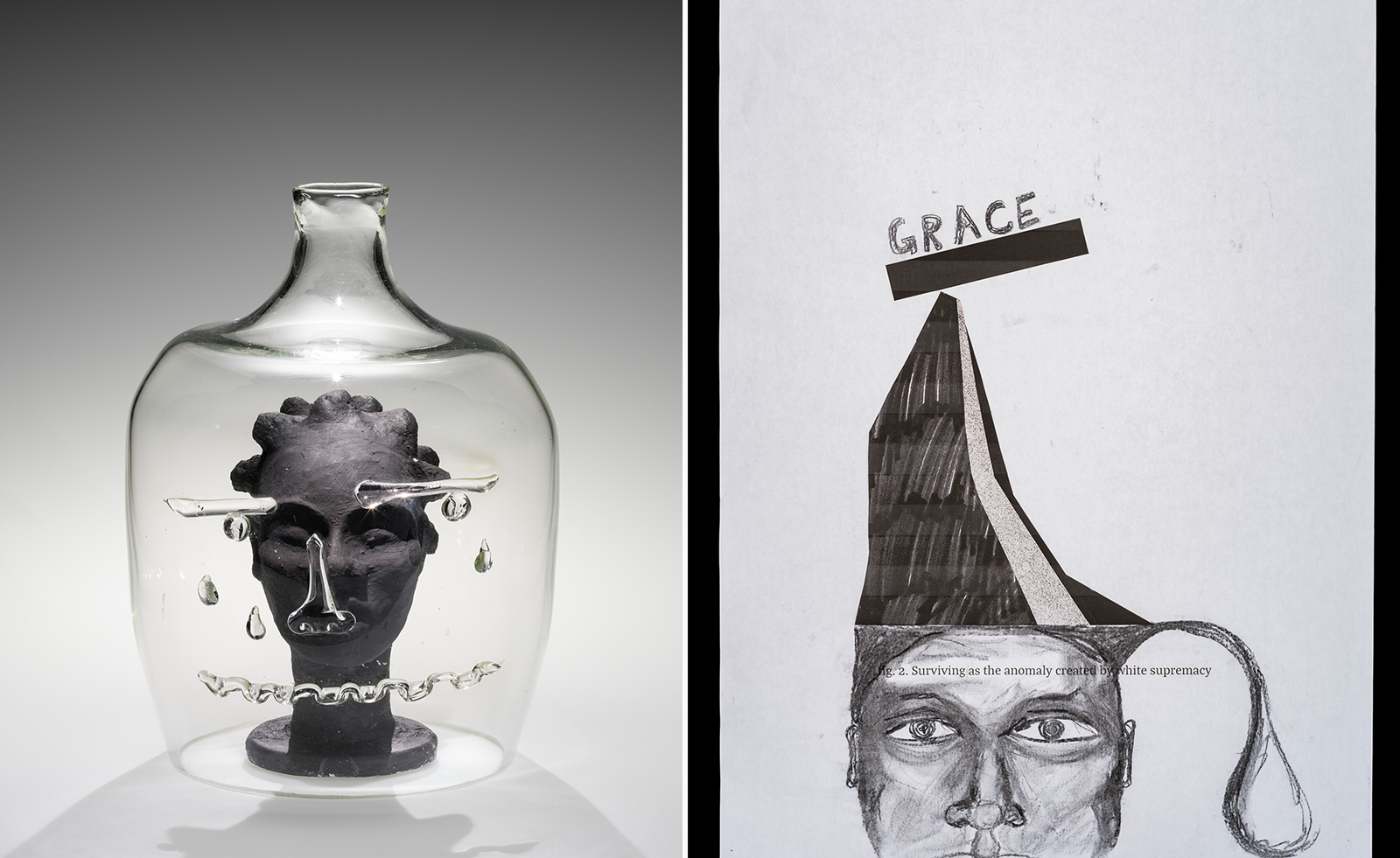
Glass is far from being a loner’s endeavour: necessitating a joint effort, the medium’s journey from molten malleability to firm translucence emerges from collective hot shop hours. Not every maker, however, has always been welcome in this shared ritual. A new exhibition at Corning Museum of Glass in upstate New York explores the historic exclusion of artists of colour from the field of glass, despite the practice’s inherent collectivity.
Under the roof of the world’s largest museum dedicated to glass, Disclosure: The Whiteness of Glass veers away from tradition in structure and display. The artist collective Related Tactics (composed of Michele Carlson, Weston Teruya, and Nate Watson) invited six artists and thinkers to respond with poetic prompts to abstract visuals, which the collective created based on their conducted research about the systematic exclusion of Black artists and curators from the glass field. This research came out of an invitation from CMoG in 2020 to be published in the New Glass Review. The collective’s findings of almost non-existent Black presence in the practice encouraged them to organise the show, which takes its final form in glass artworks created by six all-women artists in response to their colleagues’ prompts.
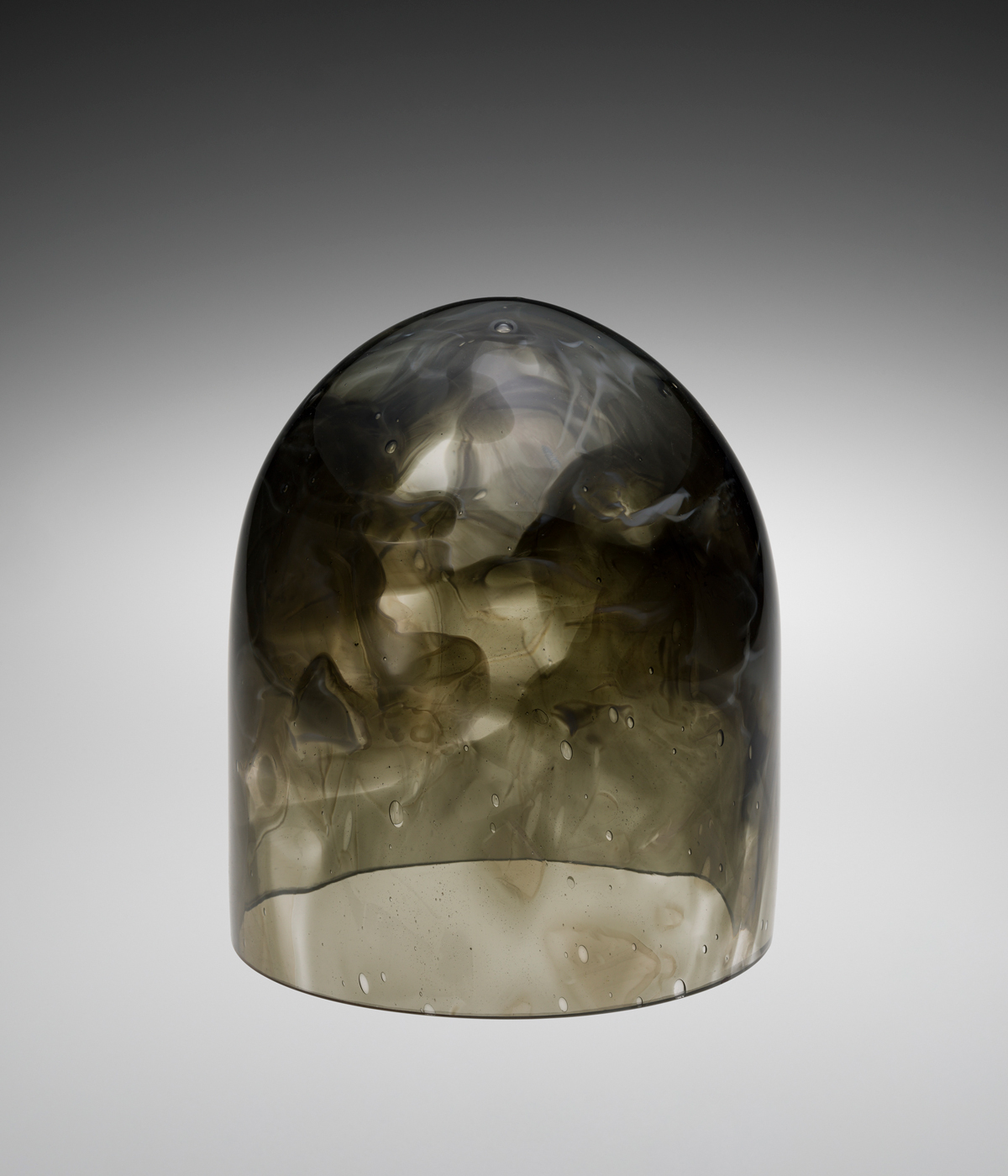
Detail 2: Navigating the institution while being simultaneously invisible and hyper visible. Related Tactics, Emily Leach, and Raya Friday, 2021–2022
The show documents the three-stage project with Related Tactics’s illustrations, as well as written prompts by those such as Einar & Jamex de la Torre, Ché Rhodes, and Cheryl Derricotte. Works that artists, including Vanessa German, Pearl Dick, and Raya Friday, created at Temple University’s glass studio at Tyler School of Art & Architecture in Philadelphia, are also present here.
Tucked behind the museum’s contemporary glass galleries, the circular installation is intimate and rather akin to a table display of freshly-excavated objects from an archeological site. A non-hierarchal linearity of the material’s journey is key. “We are interested in demonstrating the discreet moments between collaborating artists but also in the conversation within all participants,” Carlson tells us. “Through playing with small mundane mechanics like its design and wall language, we wanted to disrupt a typical exhibition’s power dynamics.”
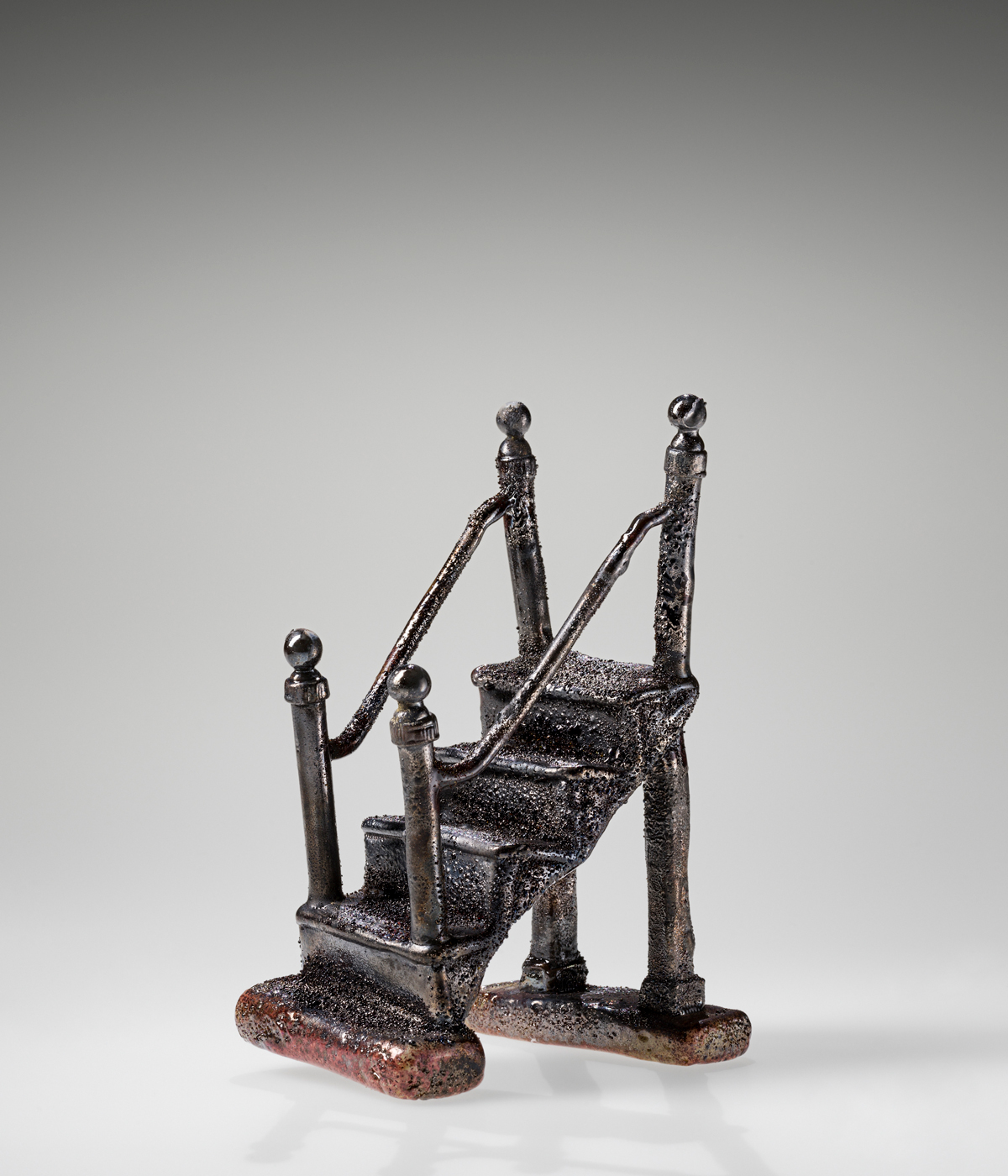
Detail 2: Temporary approaches to change exhaust resources and erode trust. Related Tactics, Corey Pemberton, and Kimberly Thomas, 2021–2022
The juxtaposition emphasises each step of the three-way dialogues between the illustrations, the prompts, and the glass. “The show doesn’t prioritise the final object,” adds Watson. Three black squares envelope a pile of black lines in one of Related Tactics visuals. “Pick a dark coloured glass, something hard to see through,” starts Derricotte’s written response. Suspended from the ceiling is Dick’s resulting work, a vertical sequence of black-colored ornate forms, tightly clamped by see-through bubbles. The contrast between the opaque and the transparent captures a tension, strikingly present in the elegance of blown glass and mysteriously alluding to challenges and impossibilities endured by many.
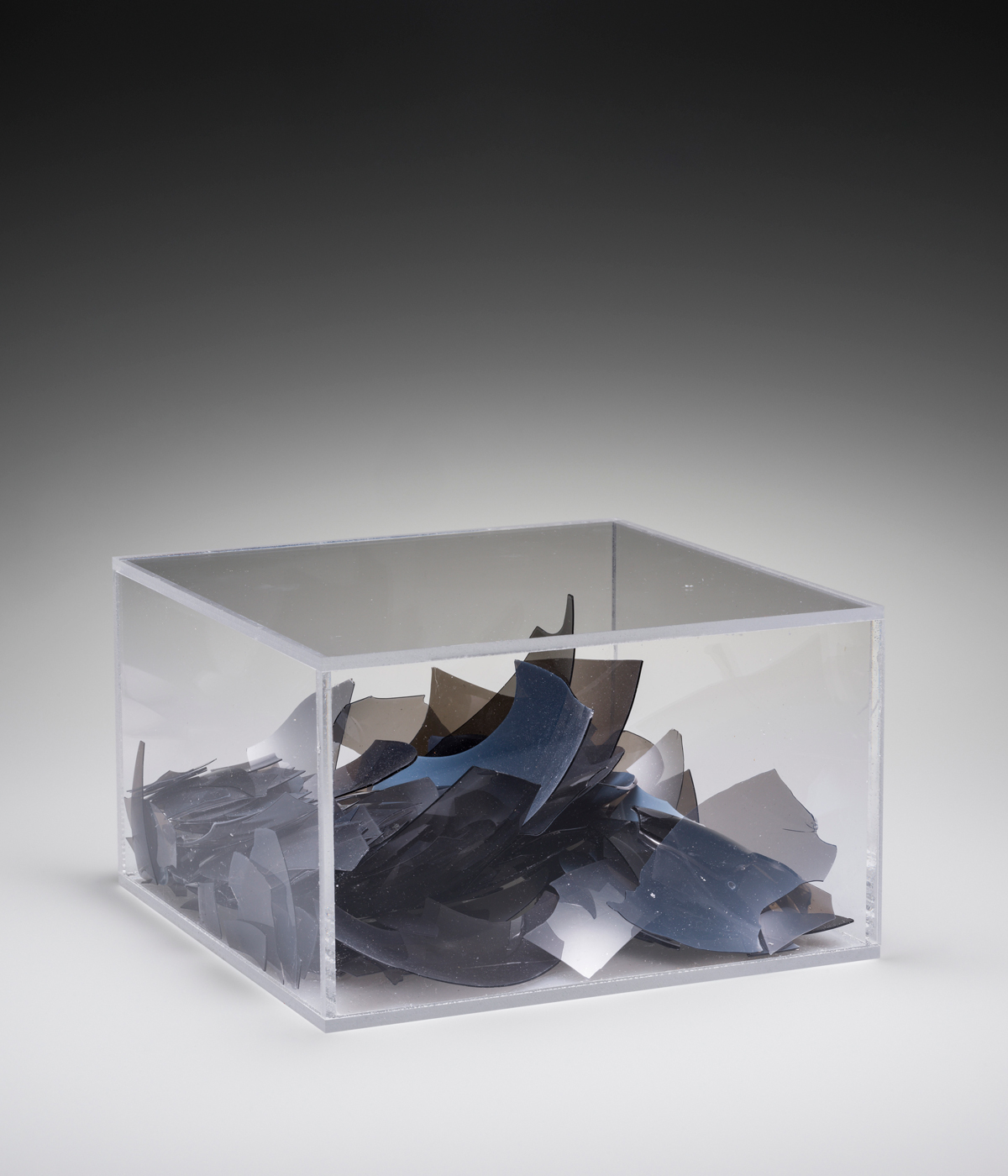
Detail 1: Navigating the institution while being simultaneously invisible and hyper visible. Related Tactics, Emily Leach, and Raya Friday. 2021–2022
Another illustration shows a geometric mountain in dark hues, holding a thick black line on its peak; Rhodes’s long letter commemorates the 19th century enslaved potter Dave Drake of South Carolina and the tradition of bottle-adorned trees in the American South. German’s contribution starts with her handwritten notes directly onto the letter, and results in an elegant transparent jug, protecting the bust of a Black woman.
The strength and fragility embodied within glass echoes throughout the show. Kimberly Thomas’s precarious mount of tiny glass chairs responds to Pemberton’s instruction that suggests, “It [an object] should be strong, solid, considered, supported.” The tension in the physical work and the affirmative words expands to the initial prompt: a full black sphere overlapping another hollow round composed of short white lines.
Wallpaper* Newsletter
Receive our daily digest of inspiration, escapism and design stories from around the world direct to your inbox.
Exhibiting at CMoG completes the full circle in the show’s relational critique. Being at an institution “complicit in the issues that created the trauma leading to this project,” explained Teruya, “hopefully will help many to understand why they have never been invited to a space where glass is made.”
Disclosure: The Whiteness of Glass is at The Corning Museum of Glass until March 2024
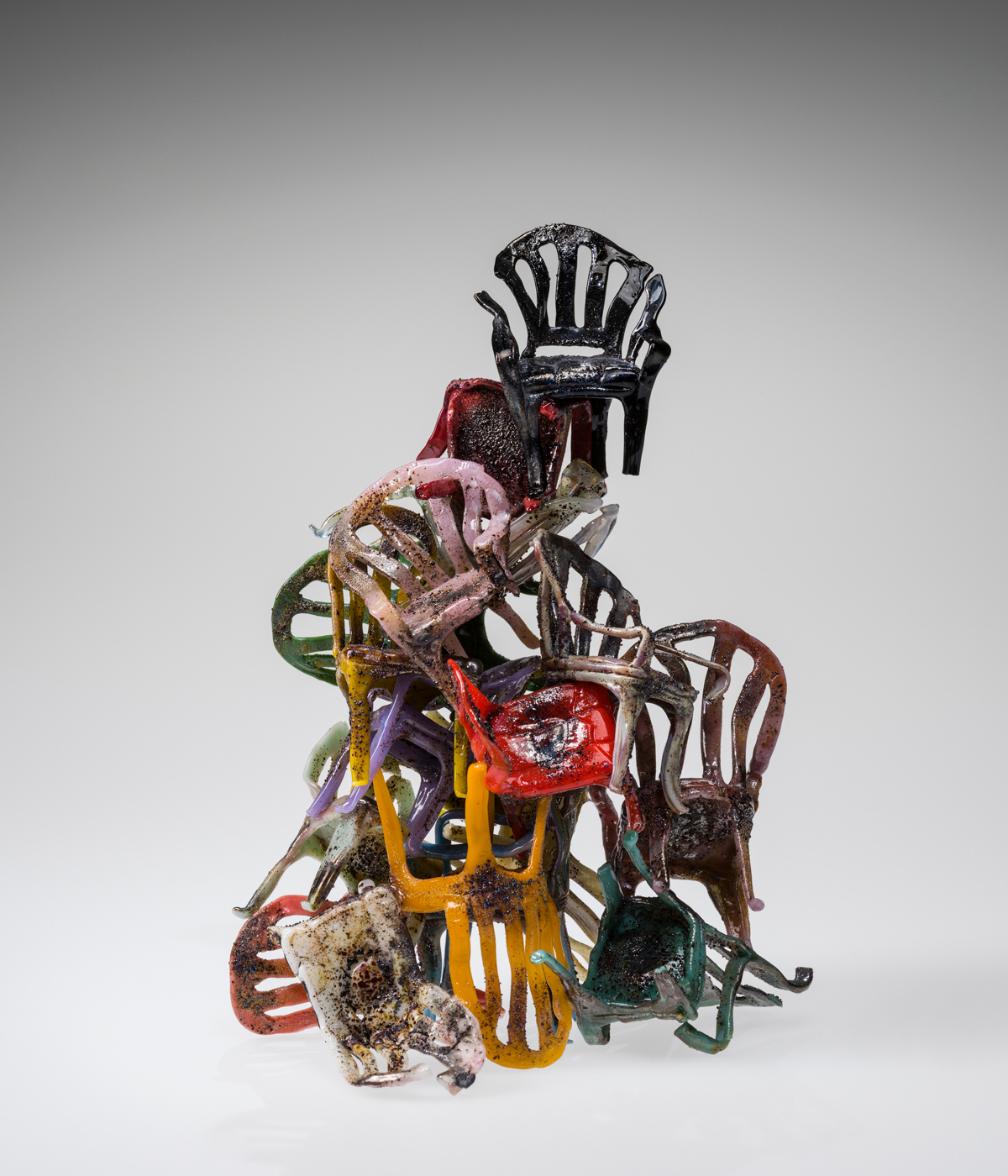
Detail 1: Temporary approaches to change exhaust resources and erode trust, Related Tactics, Corey Pemberton, and Kimberly Thomas 2021–2022
Osman Can Yerebakan is a New York-based art and culture writer. Besides Wallpaper*, his writing has appeared in the Financial Times, GQ UK, The Guardian, Artforum, BOMB, Airmail and numerous other publications. He is in the curatorial committee of the upcoming edition of Future Fair. He was the art and style editor of Forbes 30 Under 30, 2024.
-
 Nikos Koulis brings a cool wearability to high jewellery
Nikos Koulis brings a cool wearability to high jewelleryNikos Koulis experiments with unusual diamond cuts and modern materials in a new collection, ‘Wish’
By Hannah Silver
-
 A Xingfa cement factory’s reimagining breathes new life into an abandoned industrial site
A Xingfa cement factory’s reimagining breathes new life into an abandoned industrial siteWe tour the Xingfa cement factory in China, where a redesign by landscape specialist SWA Group completely transforms an old industrial site into a lush park
By Daven Wu
-
 Put these emerging artists on your radar
Put these emerging artists on your radarThis crop of six new talents is poised to shake up the art world. Get to know them now
By Tianna Williams